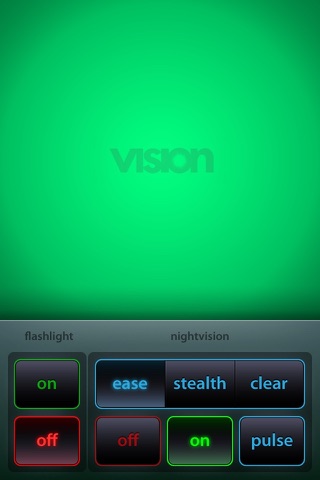
Vision Assist: Ambient Night Vision Aid app for iPhone and iPad
Developer: Sinecure Industries
First release : 01 Mar 2012
App size: 693.36 Kb
A harsh iPhone LED flashlight is not ideal for a lot of situations, so we set out to create a solution. Our filters are designed to preserve night vision while still allowing you to see.
THE THREE FILTERS
* Stealth: A deep red, similar to military applications
* Ease: A light green, perfect to see farther into the distance
* Clear: A darker green, commonly used on nighttime heads up displays
THE FACTS
√ Opens Almost Instantly
√ No ads. Ever.
√ 3 Night vision modes
√ Emergency main light
The Long Explanation:
Sinecure Industries has done serious research into the best colors for night vision filters that would suit any situation for Vision Assist: Ambient Night Vision Aid. The back of our eye, called the retina, detects light and allows us to see. The retina is made of of 2 types of structures, cones and rods. The cones are responsible for our normal daytime vision. Cones detect both the wavelength (color) and intensity (brightness) of light that goes into our eyes and passes that information to our brain.
The rods are responsible for our "night adapted vision". Rods do not detect wavelength (no color), but are very sensitive to intensity (brightness) of light. They pass on only shades of gray to our brain. They only work at very low light intensities (dim light), are most sensitive to light at about 500nm (turquoise/cyan), and are blind to red light (around 620nm).
If you are walking around under daylight and you see the world in a kaleidoscope of colors, you are using your cones to see with. If you are walking around under starlight and the whole landscape appears as shades of gray, you are using your rods to see with. Rods take some time to work after moving from bright lights to a dim environment, usually about 15-30 minutes for them to work at 100%. However, even a fraction of a second of bright light will cause the clock to reset and you may have to wait another 15-30 minutes for your night vision to be back to 100%.


